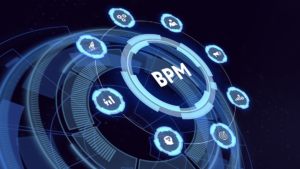
ACL Digital
4 Minutes read
IoT Enabled Smart Asset Tracking and Management Across the Entire Supply Chain
The internet has been a great force for global reach and organizations are moving beyond boundaries in search for new customers. This has mandated strong asset base in terms of brick and mortar infrastructure and human resources. Lack of visibility has always been a roadblock for asset intensive companies in Manufacturing, Retail, Oil and Gas, Construction, Manufacturing and Transportation. With a highly disseminated asset infrastructure, it is imperative to have end-to-end visibility of the value chain.
Traditionally owners have been using Asset monitoring solutions like EAM applications, barcodes or RFID to varying degrees of success. They have been providing information on status, maintenance and general tracking for disparate functions. IoT enabled asset tracking captures the data gathered from sensor rich environment in to meaningful actionable insights. For example, it can combine the data about how frequently the asset is worked with and its maintenance schedule to create a optimized timetable of usage. It can also trigger an alert to the accounts department about the warranty needs while scheduling a maintenance run.
Confluence of Digital and Traditional Asset Management
The smart asset management environment can be adapted to different eco-systems. For example the information required by OEMs would be diametrically opposite from operators. OEMs may be more focused on customer data and operators would be concerned about deployment and maintenance. Organizational functions can use the information for strategic and tactical decision making. Real time intelligence alerts, predictive and cross domain analytics and real-time visibility can manage disruption.
IoT driven Smart Asset Management
Traditional and standalone solution brought in lot of data. This meant much number crunching, paper trails and manual intervention leading to loss of data, errors and siloed information centers. IoT brings intelligence to this mix which ensures end-to-end automation, high visibility and seamless integration of multi-channel and domain data for decision making.
Intelligent Supply Chains
IoT is becoming the driving force for businesses worldwide. Sensors are embedded in office areas, wearables, crates, trucks, cars, engines and ships to monitor every movement within the supply chain.
Movements like Farm-to-Fork, precision agriculture or optimized manufacturing can never be fulfilled without IoT enabled smart asset tracking. For example, Farm-to-Fork taps agriculture intelligentsia about use of organic components, sustainable practices, water usage and farm labor conditions to provide their followers wholesome and guilt-free food on the table. Manufacturers across the world are monitoring business units to understand compliance, asset optimization and market focused delivery. Retail and e-commerce giants are leveraging IoT to provide deep visibility to their employees, customers and vendors.
Responsive Cold Chains
Cold chains are becoming the integral part of global supply chain and the market will be worth 293.37 by 2023. Changing customer tastes and emergence of universal cuisines has buoyed the perishable movements across geographies. But cold chains are also subjected to stringent regulatory and compliance procedures. There is zero scope for any transgressions that can be forgiven. Traditional cold chain monitoring is highly inadequate with no real time visibility. It is highly manual and time consuming with logging devices set up with USB connections. This information is later retrieved to read the contents. This provides scope for only post mortem analysis unlike IoT sensory systems that provides instant, visibility for all stakeholders.
So, if your stopgap agent failed to set the correct temperature or the container is sitting on the airport tarmac it is possible for the controlling operator to explore alternatives and take remedial actions.
The Road Ahead
IoT enabled asset management is a sum total of tracking, health monitoring, workflow automation, predictive information and lifecycle management. It is bringing together multi-faceted systems and players to provide accurate and real time insights of your supply chain. This becomes a valuable tool for organizations to create responsive supply chains that meet the evolving customer demands.





